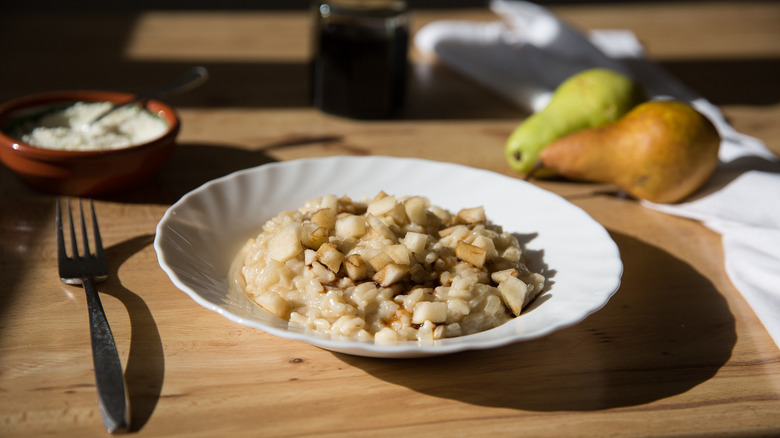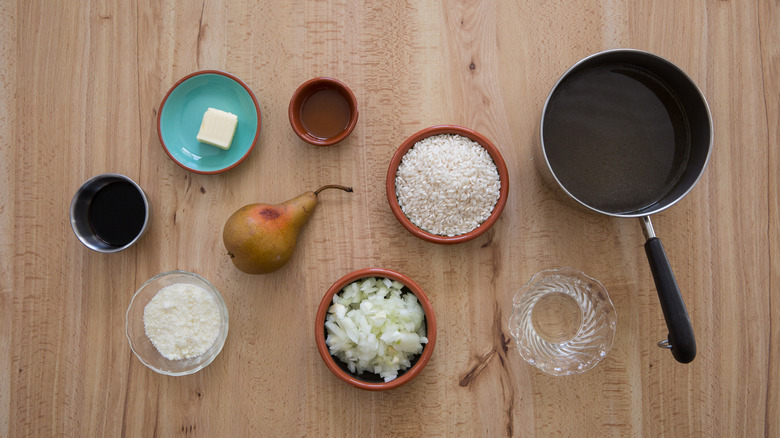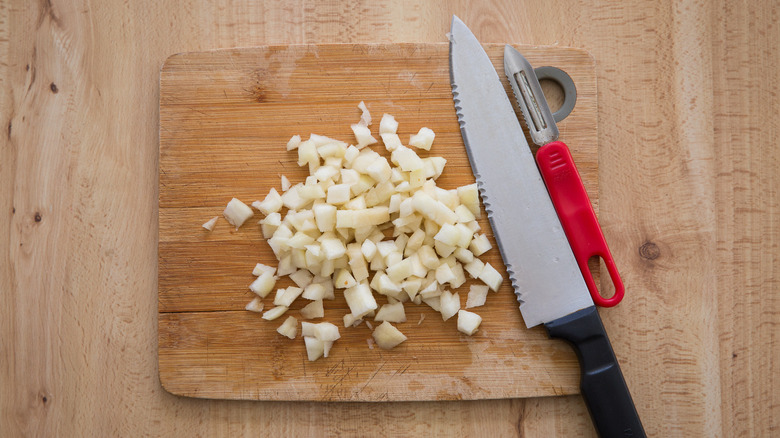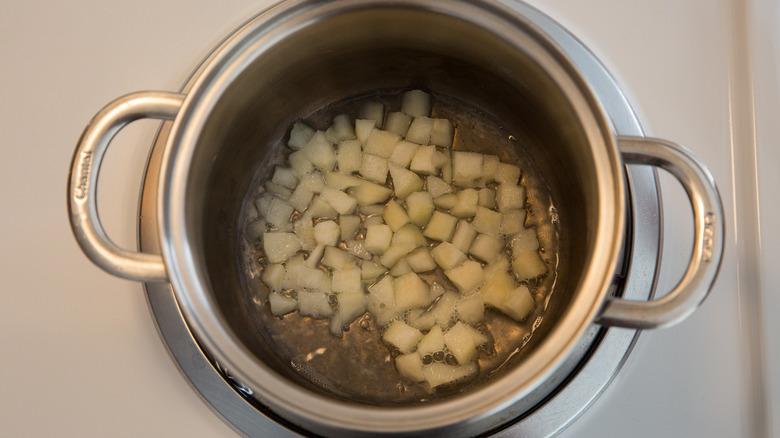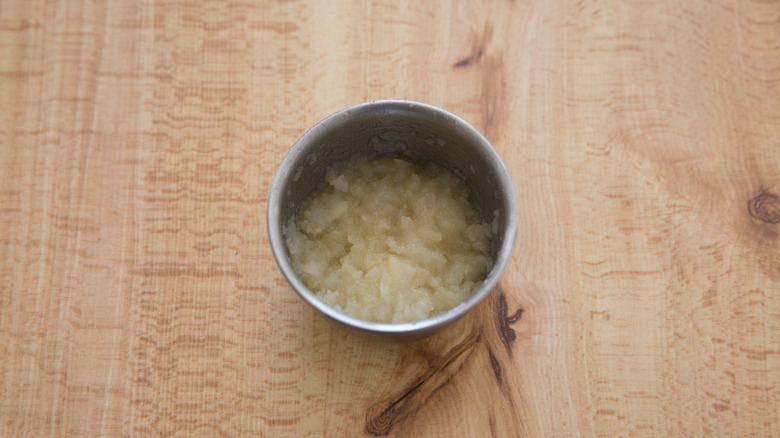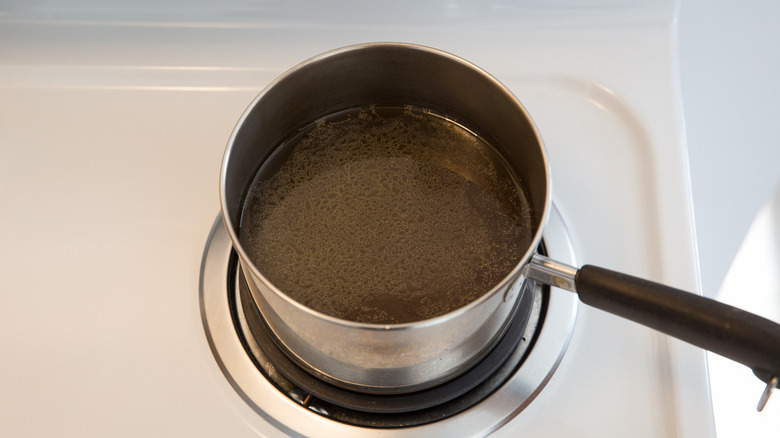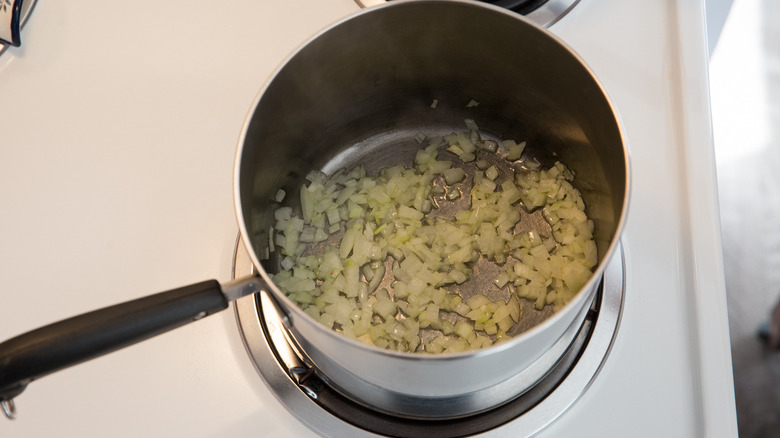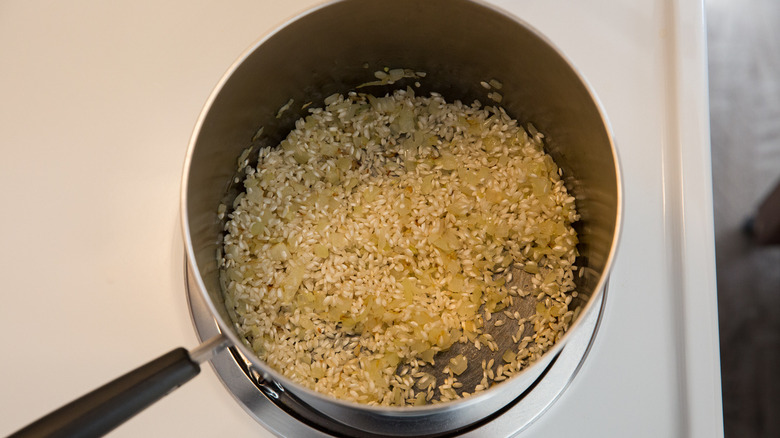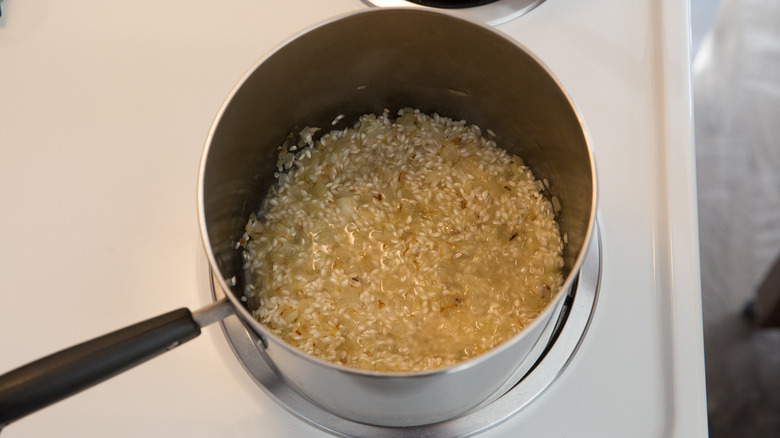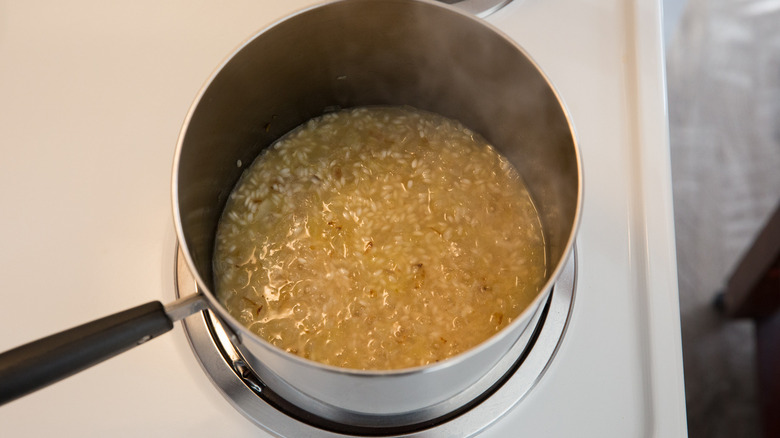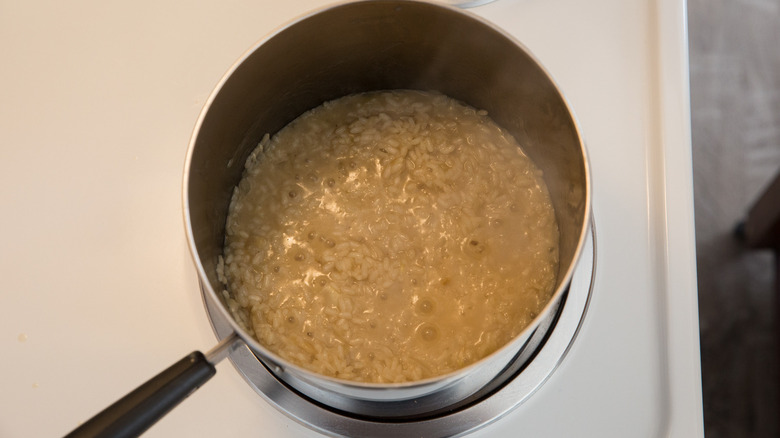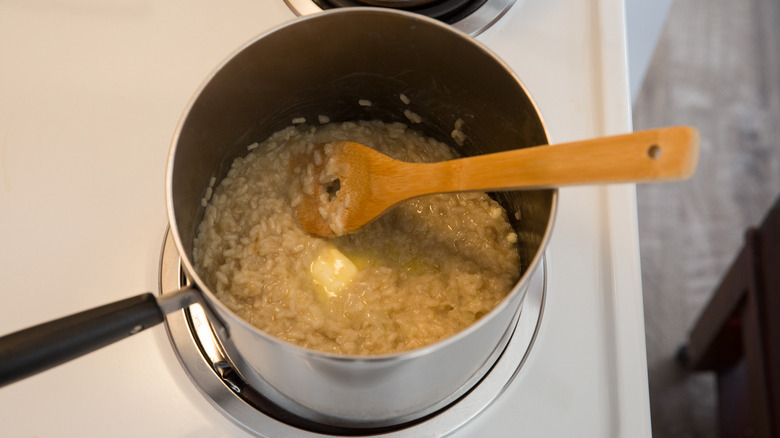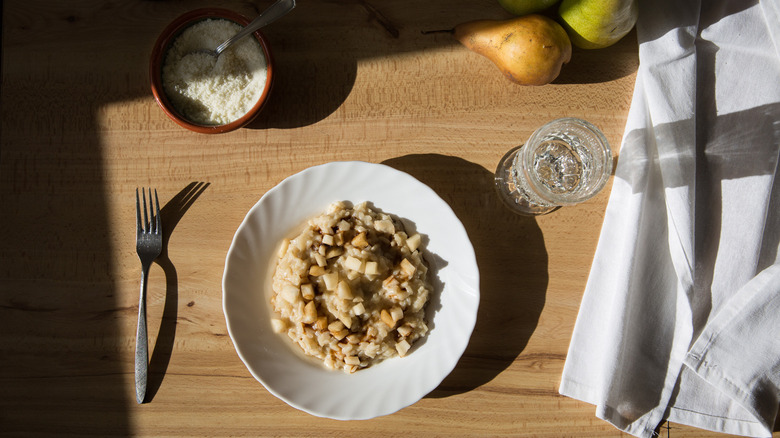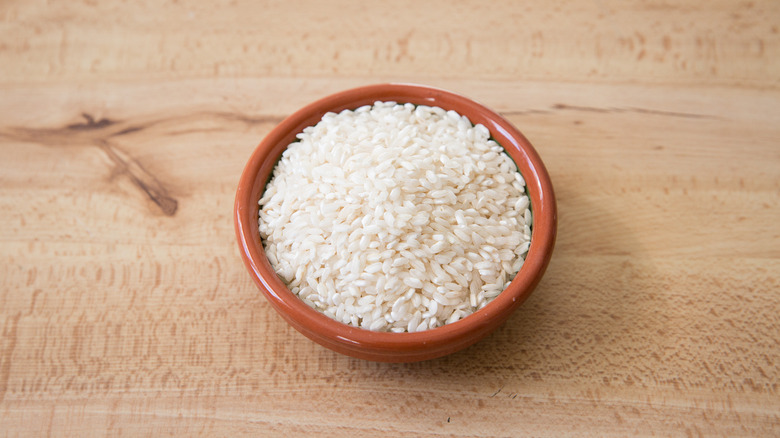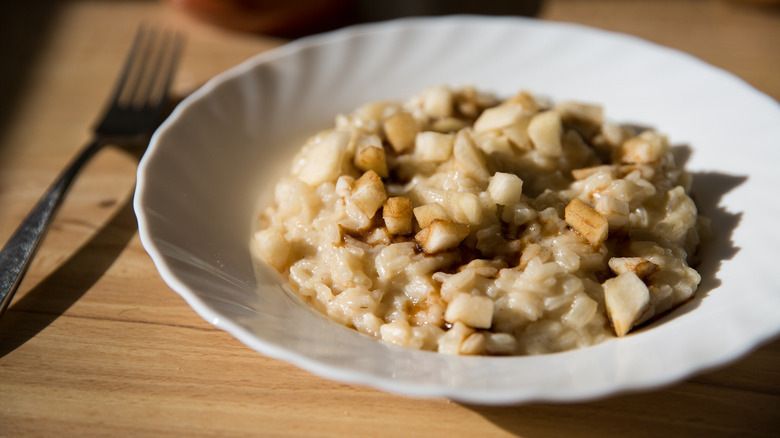Autumnal Pear And Balsamic Risotto Recipe
Risotto is a beloved Italian dish that takes rice to the next level. It's made using characteristic rice varieties that cook up with other ingredients to make a creamy, decadent final dish. Some people stay away from risotto because they fear it requires fussy preparation and nonstop stirring, but it can cook up in as little as 15 minutes — and we promise you don't have to stir the whole time. There are countless possibilities for ingredients when it comes to risotto, but adding fruit may be one of the more surprising options.
Recipe developer Michelle Bottalico has created a recipe for a pear and balsamic vinegar risotto that's perfect for the fall. The base is a classic risotto made with Carnaroli or Arborio rice, the creaminess of which is enhanced further with butter and Parmesan cheese. The pear gives the dish a uniquely sweet taste that pairs beautifully with the drizzle of balsamic vinegar, and those two special additions enhance the flavor of the whole dish for a final taste that's begging to be savored.
Gather your autumnal pear and balsamic risotto ingredients
To make this recipe, first you'll need a pear, and you can use any variety you like. It doesn't need to be at a particular stage of ripeness, but ripe pears won't take as long to cook and will give the dish added sweetness. Next, grab some vegetable or chicken broth, extra virgin olive oil, an onion, and a little white wine.
You can't make risotto without rice, and this recipe uses Carnaroli or Arborio rice. Arborio may be easier to find depending on where you shop. Butter and grated Parmesan cheese will be added at the end to make the risotto extra creamy, and, finally, you'll need a good quality balsamic vinegar to drizzle on the individual dishes right before serving.
Step 1: Prepare the pear
Peel, core, and dice the pear. Set half of the diced pear aside.
Step 2: Cook half of the pear
Place the other half of the diced pear in a small saucepan with a little water, and cover. Bring the water to a simmer and cook over medium-low heat for 5-15 minutes until tender. (The time will vary depending on the ripeness and type of pear chosen. Add a little more water if needed.)
Step 3: Puree the cooked pear
Puree the cooked pear using a food processor or blender or by mashing with a fork. Set aside.
Step 4: Heat the broth
Heat the broth in a saucepan until it comes to a simmer. Cover and reduce the heat to low to keep the broth at a gentle simmer throughout the risotto-making process.
Step 5: Saute the onions
Meanwhile, add the oil to a separate large saucepan and place over medium heat. Once hot, add the onion and saute for 5-6 minutes until translucent
Step 6: Toast the rice
Add the rice and stir to evenly coat in oil. Toast for 2-4 minutes, stirring frequently.
Step 7: Pour in the wine
Pour in the wine and cook it until it evaporates, stirring frequently, about 1-2 minutes.
Step 8: Add some broth
Add 2 ladlefuls of hot broth, or enough to barely cover the rice, and stir well. Let the rice cook, stirring frequently and keeping the heat at a simmer, until the broth is absorbed.
Step 9: Cook the risotto
Continue to add broth 1 ladleful at time and let it absorb, stirring all the while. Do this until the rice is cooked but still al dente, about 15-18 minutes. (You may not use all of the broth.)
Step 10: Stir in pear, butter, and Parmesan
Remove the pan from heat and stir in the pureed pear, butter, and Parmesan.
Step 11: Garnish and serve the pear and balsamic risotto
Divide risotto among wide, shallow bowls, garnish with the remaining diced pear, and drizzle the balsamic vinegar on top. Serve immediately.
What kind of rice can I use to make pear and balsamic risotto?
The best kind of rice to use for risotto has large, evenly sized grains and cooks into a creamy consistency. Arborio rice is the Italian variety of rice that's best known abroad. It began to be cultivated in 1946 in the Northern Italian town of Arborio in the region of Piemonte. It's pearled, which means it has a more solid, opalescent, and starchier center with transparent edges around it, which is great for risotto because the edges turn nice and creamy while the center stays al dente.
Carnaroli is the most classic choice for risotto in Italy. It's also large grained and pearled, but it has a higher amylose content, which means it's starchier and will be sturdier and less creamy than risotto made with Arborio rice. Sometimes this is more desirable. Carnaroli rice can be found abroad, but it's less common than Arborio. Other varieties of Italian rice, like Vialone Nano, Baldo, Roma, and Venere, are white, off white, black, or red, and are commonly used for risotto in Italy. Unfortunately, they are harder to find abroad.
Can I substitute any ingredients in this pear and balsamic risotto?
We love this recipe the way it's written, but it is possible to make a few changes. If pears aren't available, you can use apples instead and the result will be similar. Simply cook and puree the apples by following the same directions for the pears. If you prefer, you could try using leeks or shallots instead of the onion this recipe calls for. Finally, you can also put a spin on the balsamic vinegar that's drizzled on the bowls of risotto right before serving by using a balsamic reduction instead. The reduction can be made by boiling regular balsamic vinegar until it's reduced to ⅓ of its original volume. Just know that the reduction will be thicker than the plain vinegar, with a sweeter and more concentrated taste. Make sure it's a good quality vinegar for the best results.
Autumnal Pear and Balsamic Risotto Recipe
Sweet pear and luxurious balsamic vinegar add an elegant touch to this simple, cheesy risotto.
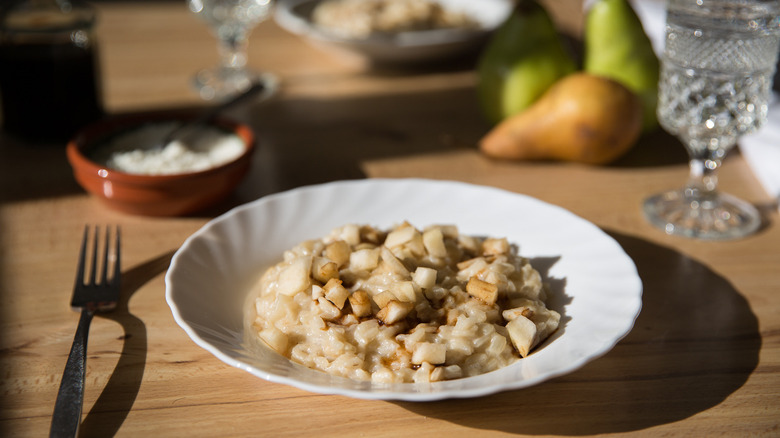
Ingredients
- 1 pear
- 3 cups chicken or vegetable broth
- 1 tablespoon extra virgin olive oil
- ½ yellow onion, finely chopped
- ¾ cup Carnaroli or Arborio rice
- ¼ cup white wine
- 1 ½ tablespoons butter
- ¼ cup + 1 tablespoon grated Parmesan
- Balsamic vinegar, for topping
Directions
- Peel, core, and dice the pear. Set half of the diced pear aside.
- Place the other half of the diced pear in a small saucepan with a little water, and cover. Bring the water to a simmer and cook over medium-low heat for 5-15 minutes until tender. (The time will vary depending on the ripeness and type of pear chosen. Add a little more water if needed.)
- Puree the cooked pear using a food processor or blender or by mashing with a fork. Set aside.
- Heat the broth in a saucepan until it comes to a simmer. Cover and reduce the heat to low to keep the broth at a low simmer throughout the risotto-making process.
- Meanwhile, add the oil to a large saucepan and place over medium heat. Once hot, add the onion and saute for 5-6 minutes until translucent.
- Add the rice and stir to evenly coat in oil. Toast for 2-4 minutes, stirring frequently.
- Pour in the wine and cook it until it evaporates, stirring frequently, about 1-2 minutes.
- Add 2 ladlefuls of hot broth, or enough to barely cover the rice, and stir well. Let the rice cook, stirring frequently and keeping the heat at a simmer, until the broth is absorbed.
- Continue to add broth 1 ladleful at time and let it absorb, stirring all the while. Do this until the rice is cooked but still al dente, about 15-18 minutes. (You may not use all of the broth.)
- Remove the pan from heat and stir in the pureed pear, butter, and Parmesan.
- Divide risotto among wide, shallow bowls, garnish with the remaining diced pear, and drizzle the balsamic vinegar on top. Serve immediately.
Nutrition
| Calories per Serving | 589 |
| Total Fat | 21.9 g |
| Saturated Fat | 9.9 g |
| Trans Fat | 0.0 g |
| Cholesterol | 38.7 mg |
| Total Carbohydrates | 78.5 g |
| Dietary Fiber | 5.7 g |
| Total Sugars | 10.9 g |
| Sodium | 333.8 mg |
| Protein | 14.1 g |
